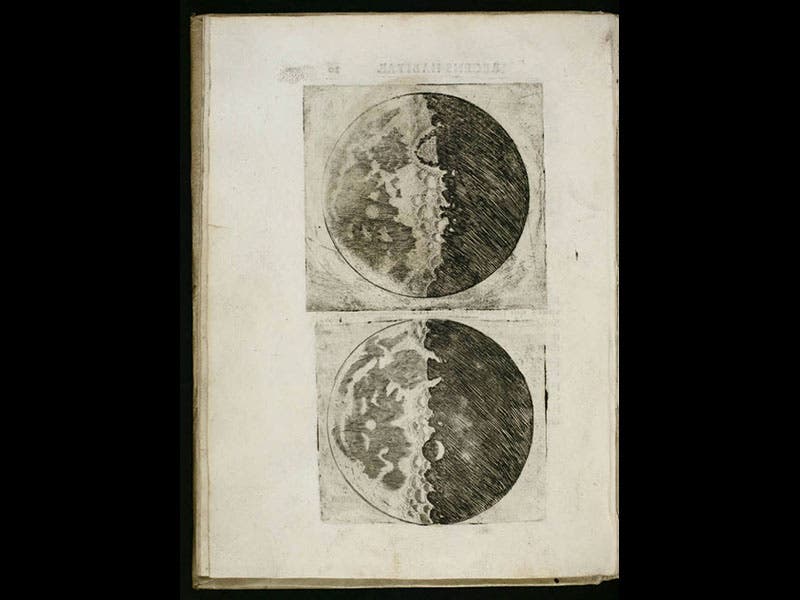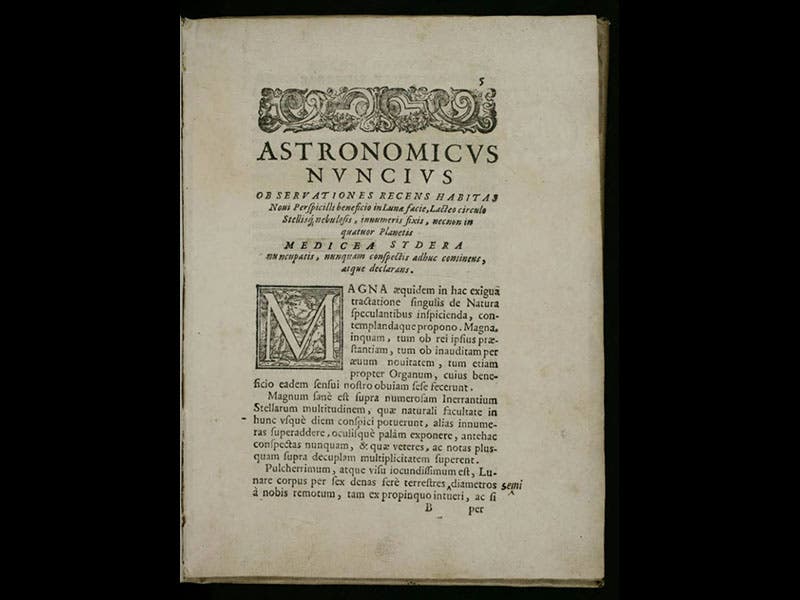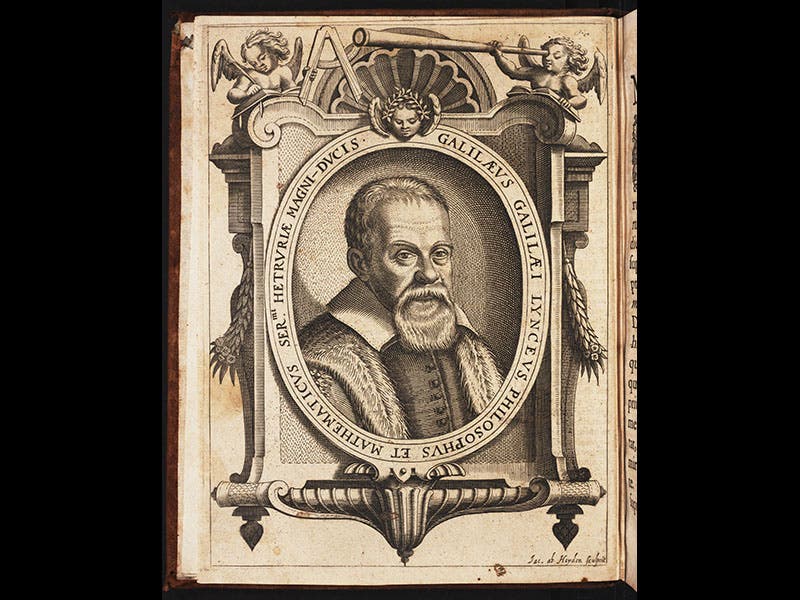Scientist of the Day - Galileo Galilei
Galileo Galilei was born Feb. 15, 1564. He is one of the most famous scientists who ever lived, and he came onto the scientific scene in 1610 with a bombshell, Sidereus nuncius (Starry Messenger). Not only was this the first book to reveal what the moon looks like through a telescope, but it also announced the discovery of four satellites of Jupiter, which Galileo named the "Medicean stars" in a (successful) bid for patronage. We acquired our copy of the Sidereus at auction in 1988, and it is a rather special copy, one of eleven copies that were printed on extra-thick paper, intended for presentation to selected luminaries by Galileo. These special printings were corrected by Galileo himself; on the first page, you can see the word "semi" penned in by Galileo's own hand at the bottom of the page (third image). Our Sidereus arrived just in time to be featured in our 1989 exhibition, The Face of the Moon: Galileo to Apollo.
We also have in the History of Science Collection another edition of the Sidereus nuncius that is not nearly as valuable, but which is much more scarce, and just as interesting. This is a pirated copy of the original edition, printed in Frankfurt later in 1610, after the first edition had been issued in Venice. Not many books were pirated in the 17th century--it just wasn't worth the expense--but Galileo's pamphlet was so sensational that it was quickly unobtainable, and a Frankfurt printer obtained a copy and proceeded to issue his own unauthorized edition. Because this was done on the sly and on the cheap, little time or expense was spent on the illustrations. The Venetian edition had carefully etched plates of the Moon (second image), and several very accurate star maps, including one of the lower half of the constellation Orion (first image). In the Frankfurt piracy, the moon images were coped as crude woodcuts (fourth image), and the star maps, printed in relief, are barely maps at all (fifth image). Nevertheless, this naughty, illegitimate child is more than welcome in our family of Galileiana.
The portrait of Galileo (sixth image) is from the first Latin edition of Galileo’s Dialogue on the Two Chief World Systems (1635).
Dr. William B. Ashworth, Jr., Consultant for the History of Science, Linda Hall Library and Associate Professor, Department of History, University of Missouri-Kansas City. Comments or corrections are welcome; please direct to ashworthw@umkc.edu.












